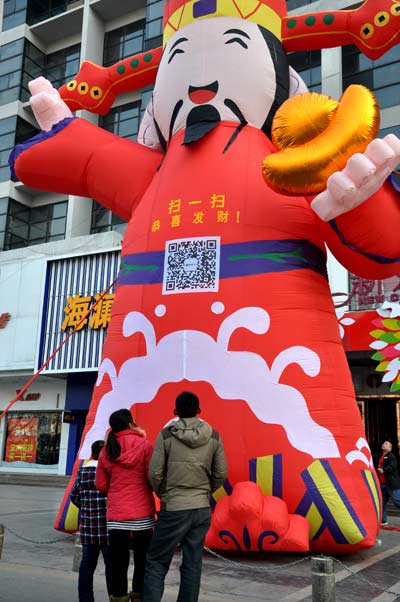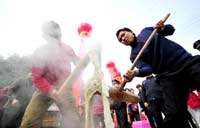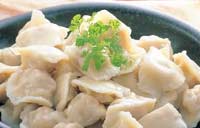Traditional Chinese 'Little New Year' festival
 |
|
A huge inflatable Kitchen God stands in front of a mall in Shandong province. [Photo/Asianewsphoto] |
The evening before Little New Year, the image of the Kitchen God that has been overseeing the household for the past year is taken down from its position by the stove. While the image is dried in preparation for burning, offerings and firewood are prepared. The firewood may include bundles of pine, cypress, holly, and pomegranate twigs. A new image of the Kitchen God is purchased, and figures of horses and dogs are plaited out of sorghum stalks. The offerings include pig's head, fish, sweet bean paste, melons, fruit, boiled dumplings, barley sugar, and guandong candy, a sticky treat made out of glutinous millet and sprouted wheat. Most of the offerings are sweets of various sorts. It is thought that this will seal the Kitchen God's mouth and encourage him to only say good things about the family when he ascends to Heaven to make his report. The Kitchen God will be invited to sit in a sedan chair for his trip to Heaven. Consequently, the day before Little New Year, streets and alleyways everywhere are full of vendors selling papermache sedan chairs and paper gold and silver ingots for the Kitchen God's journey, and singing songs in his honor.
When a family makes offerings to the Kitchen God, it is in the hopes that he will ask Heaven to protect their household. According to an old maxim, "In Heaven good deeds are reported, on Earth safety is ensured." The new image of the Kitchen God is not pasted up until Lunar New Year's Eve or New Year's Day, in a ceremony known as "welcoming back the Kitchen God." According to a saying from southern China, "On the twenty-fourth day he ascends to Heaven; on New Year's Day he returns to Earth."


















